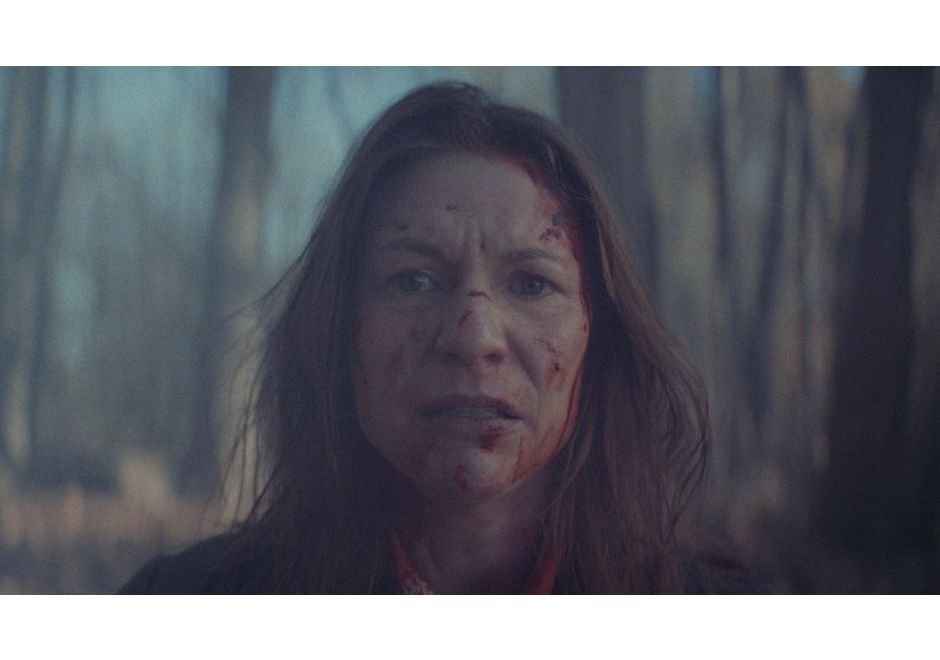Netflix’s new binge-worthy eight-episode psychological thriller, The Beast in Me, centers on Aggie Wiggs (Claire Danes), a successful author who’s vanished from the public eye since the tragic death of her young son. When Nile Jarvis (Matthew Rhys), a notorious land developer and prime suspect in his wife’s disappearance moves in next door, Aggie is both horrified and fascinated by him. She finds herself compulsively hunting for the truth about Nile while battling her own demons. The show hooks you from the start and doesn’t let go.
For showrunner Howard Gordon (Homeland, 24) and executive producer and writer Daniel Pearle (Accused, American Crime Story), the series is less a whodunnit than a razor-edged cat-and-mouse game between two powerful personalities locked in a kind of emotional and moral duel. We sat down with Gordon and Pearle to break down the craft behind this TV show about a possible sociopath who’s met his match.
“It’s a fundamental two-hander psychological thriller,” Pearle says. “Two alphas sparring with each other. That’s my favorite stuff to write.”
The Beast in Me began as a spec pilot by creator Gabe Rotter around 2019. “It had been kicking around for a while,” Pearle says, even going through a writers’ room and several iterations.
Meanwhile, Claire Danes had been quietly developing the project for years. With her long history with Gordon on Homeland and her collaboration with Pearle on the feature A Kid Like Jake, she eventually pulled them both in to reimagine the series.
Gordon and Pearle came to the material as a team, with the luxury, and pressure, of putting fresh eyes on a script that had already been through the development mill. Could they be the writers to finally crack an intriguing pilot that still needed a good amount of definition?
“It’s a pilot that doesn’t suggest what it is or what it will be,” Gordon says. “We loved the situation, loved the character, and of course loved Claire. But there was that tickle of fear: what is this show, really? A lot of thinking had to be done. That was the pleasure and the challenge because we weren’t selling the show, just our vision of what it should be.”
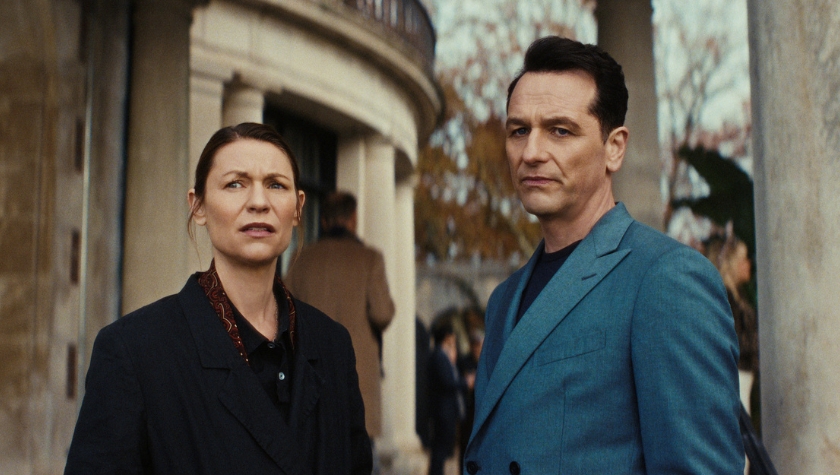

Aggie vs. Nile: Writing two different kinds of beasts
The title, inherited from Rotter’s original pilot, comes loosely from the Johnny Cash song “The Beast in Me.” At first glance, it seems to point squarely at Nile Jarvis, the charming real estate mogul who may have murdered his wife. But the writers quickly realized everyone in the story has a beast inside them, not just Nile and Aggie.
“Honestly, it’s in all of them,” says Gordon, adding, “Everybody is, at some level, complicit in enabling this sociopath – Nile’s father, his uncle, his wife. And Aggie, who whispers her deepest grievance into a monster’s ear, sets something in motion that has real consequences.”
Aggie, who’s grieving the death of her son, was easier to ground emotionally. Her “stuckness” is the starting point in her arc. The challenge was dramatizing that isolation without turning the pilot into 60 minutes of a depressed woman alone in an old house.
“A lot of the pilot, she’s alone,” Pearle says. “Her isolation is the story. That’s very hard to dramatize. One of the choices we made was setting the pilot around the anniversary of her son’s death and finding behavior that would reveal her psychological state, but also give us organic excuses for that information to come out, like the scene at the gravesite with her ex-wife and Fenig.”
If Aggie is about being alone and paralyzed, Nile is about performance and risk-taking.
“In a way, Nile was the far more elusive character,” Gordon says. “Sociopaths are very challenging. There are a lot of sand traps. He can become operatic and mustache-twirly very quickly. We didn’t want that.”
Pearle’s theatre background was helpful in finding Nile’s “music” as he calls it.
“People perform in many different ways,” Pearle says. “Sometimes Nile performs with language. Sometimes he’s unafraid of a really uncomfortable silence, and that silence is power. We wanted that unpredictability. When is he verbose, when is he quiet, when is he using language as a weapon or seduction?”
Gordon describes it as “jazz,” the very specific rhythm of the character, honed over many drafts. That rhythm then met Matthew Rhys’ performance. “He sells that woundedness, that excruciating human vulnerability that perversely makes you feel for him,” he says.
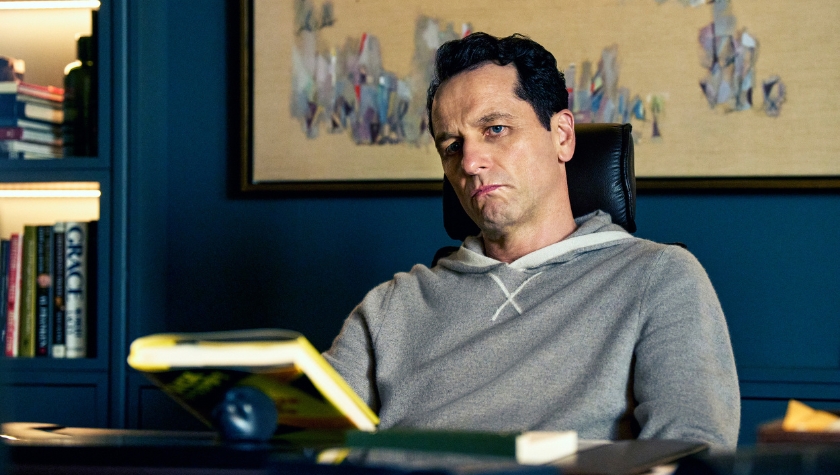

The 8-page lunch scene: When talking is action
Ask any TV writer and they’ll tell you that no matter what, don’t set a key scene in your pilot at a table, and certainly don’t make it eight pages of dialogue. The Beast in Me does exactly that - and it’s gold.
“I was thrilled to have the freedom to write an 8-page lunch scene,” Pearle says. “That scene is the inciting incident for the whole show. Two fundamentally lonely people, and something almost alchemical happens between them. Aggie has fun for the first time in years. Nile finally meets someone who doesn’t just kiss his ass.”
Nile comes armed, however. He’s read Aggie’s book about her father and weaponizes his insight, calling what she’s written not a takedown, but, “A kind of perverse love letter.” The line cuts so deep because it’s true, and Aggie knows it.
“In that scene he earns her respect, even as he offends her,” Pearle says. “That’s what I love about long dialogue scenes. Language can be action when it’s used correctly. It can be a weapon, seduction, confession, all at once.”
Gordon likens it to a poker game: “They’re showing their cards selectively. There’s his reputation, the vulnerability of being exposed, the eventual confrontation about the photo. It’s not just two people sitting at a table; there are dynamic pressures working on the scene.”
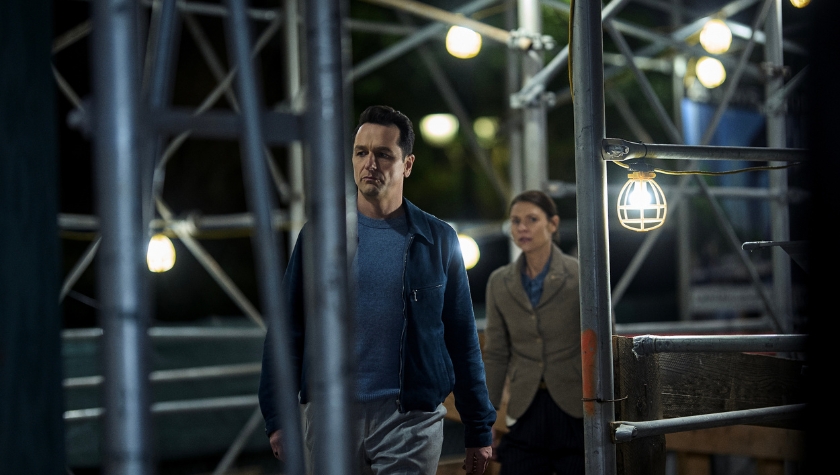

Laying pipe in a murder mystery: Plant questions, not just clues
For TV writers, the inevitable question with a show like this is: How do you lay pipe for a mystery across multiple episodes without it feeling like homework?
“Oh, it’s really hard,” Gordon says quickly. “Really hard.” But knowing a few tentpoles that will prop up the story helps make it easier, he says.
“We always start with, what are the big tentpoles?” Pearle says. “What’s the midpoint? What’s three-quarters of the way through? What’s the big turn at the end of the season? If we know we’re rowing towards one event, we can ask, ‘What would it take to get there?’”
But he also says you need to be flexible and allow those tentpoles to shift. “Sometimes those events change,” he adds. “But having them gives you something to row toward while you make discoveries.”
And perhaps one of the most difficult things to do is to aim for twists that feel inevitable in hindsight. “My biggest pet peeve with TV mysteries is twists that feel purely random,” Pearle says. “I love to be surprised, but if it doesn’t feel retrospectively like, ‘Oh, of course,’ I feel manipulated. You want that balance between unexpected and inevitable.”
In other words: don’t build a puzzle for its own sake. Build a story where every twist reveals character and deepens the theme.
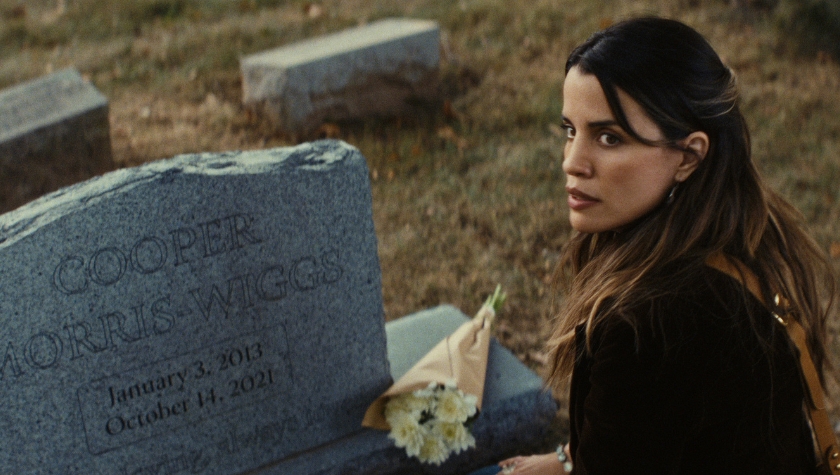

Will there be a Season 2?
Right now, the team is content with the story they’ve told, but Gordon says, “There’s always a chance. But we’re not going to do it just to do it. If there’s a story, we’ll apply ourselves. We just haven’t yet.”
Until then, The Beast in Me stands as a self-contained masterclass in two-hander tension, character-driven mystery, and a story that’s absolutely addictive. The show begins streaming on Netflix Nov. 17.

